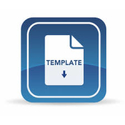AUTHOR GUIDELINES
- Authors are invited to submit the papers related to language, covering linguistics, literature or language teaching via the Open Journal System (OJS) of Journal of Language, https://jurnal.uisu.ac.id/index.php/journaloflanguage. Should you have any query, please do not hesitate to contact us to: journaloflanguage@sastra.uisu.ac.id
- The authors(s) must follow the author guidelines in preparing the manuscript before submission.
- Submissions must be unique and should not have been published earlier or be under consideration for publication while being evaluated for this Journal.
- The language of the manuscript must be English (either American or British standard, but not the mixture of both).
- Article should be in the form of a research result, scientific essay, analysis, criticism or review of books on the above fields.
- Manuscript should be typed in the word processor file formats in the font of Times New Roman 12 on A4 paper format with one space between 6-12 pages. Any manuscript which is either shorter or longer than the prescribed limit may be considered for evaluation, if the content is of extraordinarily high or distinctive value.
- Article should cover the title, the name of the author and his or her affiliation, abstract, keywords (conceptual words), abbreviations (if any), the main parts, and references. Kindly write your article in accordance to our template which you can download from this link: https://drive.google.com/file/d/1V0zVRMfqs0FtcOJjiiZzWRbdHo06jlzW/view
- Title and Authors Information: in the “Title and Authors Information” part, the following information should be included: Paper title/Manuscript Title: centering, font 14, capital, bold, trapezium upside-down.
- Complete author names, including Co-author names (if any): centering, font 12, small, bold, followed by the name of complete affiliation, town, country, and corresponding email address.
- Abstract: Please provide an abstract of 150 to 250 words. It should not contain any undefined abbreviations or unspecified references. It should introduce the subject matter/topic of discussion, the goal of the study, the theory used, the method applied, and the (expected) findings. It should be self-contained and must be citation-free.
- Keywords (conceptual words): Please provide 3 to 8 keywords as index terms signifying the article content.
- Abbreviations (if any) are the spelled out terms in the text for the first time and used consistently thereafter.
- The main parts cosist of: Introduction, Literature Review, Research Method, Discussion, and Conclusion.
- Introduction should be concise, with no subheadings. It should cover the background and the description of the problem, and the importance of the subject matter.
- Literature Review presents the theory applied and the related literature on the previous researches on the topic.
- Research Method consists of the description of the method of analysis.
- Discussion consists of the analysis and description on the results and the out puts of the research.
- Conclusion should clearly explain the important conclusions of the work highlighting its significance and relevance.
- Citations in the text should specify the source covering the last name of the author, year of publication, and the page number. Please ensure that every reference cited in the text is also present in the reference list (and vice versa). Avoid citation in the abstract. Unpublished results and personal communications should not be in the reference list. Citation of a reference as 'in press' implies that the item has been accepted for publication.
- All sources of citation should be included in the list of references, and the references should be arranged first alphabetically and then further sorted chronologically if necessary, and arranged according to the following:
- Last name of the author followed by a comma,
- Fist name and second name followed by a period,
- Year of publication in the parenthesis followed by a period,
- Title of the book typed in italic and followed by a period,
- Place of publication followed by a colon, and
- Name of the publisher followed by a period.
Example:
Bickman, E. (2010). Research Methodology. New York: Macmillan Inc.
Crowther, J. (ed.). (2005). No Fear Romeo and Juliet. SparkNotes LLC. http://nfs.sparknotes.com/romeojuliet/ (June 17, 2017).
Note for the Authors:
- Discussion should be described on results and out-puts of the research work.
- Conclusion should clearly explain the important conclusions of the work highlighting its significance and relevance.
- Copyrights for articles published in the journal are retained by the authors, with first publication rights granted to the journal. The journal/publisher is not responsible for subsequent uses of the work. It is the author's responsibility to bring an infringement action if so desired by the author.
- The editorial board is very strict regarding plagiarism. The journal believes that taking the ideas and work of others without giving them credit is unfair and dishonest. Copying even one sentence from someone else's manuscript, or even one of your own that has previously been published, without proper citation is considered plagiarism-use your own words instead. The editorial board retains the absolute authority to reject the review process of a submitted manuscript if it subjects to minor or major plagiarism and even may cancel the publication upon the complaint of victim(s) of plagiarism.
- The publication processing fee for a research paper is 50 USD, and it is charged only for the accepted paper.










